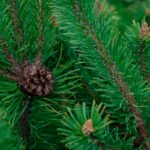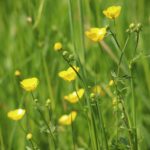Oi Maamme Suomi – Finnish Songs Analyzed
If you like music and translating Finnish song lyrics, then you might like this article. I will be analyzing Finland’s national anthem Maamme.
1. About the Song Maamme
Oi maamme Suomi is Finland’s national anthem. The song is quite long: 11 stanzas. When it is sung, people only sing the first and the last stanza. The official name of the song is just Maamme “our country”.
The Finnish anthem is based on a poem Runeberg wrote in Swedish. Translating it wasn’t easy! It was translated in different ways by more than 20 different people. The current version is based on two translations. First, a group of poets led by Julius Krohn translated it in 1867. Afterwards, Paavo Cajander made improvements to it. The current anthem has retained the original translation for the first and last stanza, while the rest of the lyrics originate from Cajander’s corrections.
Runeberg meant the poem to be turned into a song. He released his own melody for the Swedish version. Several other people composed different melodies for the poem afterwards. The melody that gained official status is by Fredrik Pacius. I find it interesting that Pacius’ version was created and presented within two days. He didn’t spend much time on it at all!
The Estonian national anthem “Mu isamaa, mu õnn ja rõõm” uses the same melody.
2. Song Lyrics
I’m only including the two stanza that people actually sing.
- Oi maamme, Suomi, synnyinmaa,
- soi, sana kultainen!
- Ei laaksoa, ei kukkulaa,
- ei vettä rantaa rakkaampaa,
- kuin kotimaa tää pohjoinen,
- maa kallis isien!
- Sun kukoistukses kuorestaan
- kerrankin puhkeaa,
- viel lempemme saa nousemaan
- sun toivos, riemus loistossaan,
- ja kerran, laulus synnyinmaa
- korkeemman kaiun saa.
4. Glossary
The following grammar terms have been abbreviated.
- sg1: first person singular
- sg2: second person singular
- pl1: first person plual
- pl2: second person plural
- pl3: third person plural
- adv.: adverb
I have marked different elements of the analysis using the following symbols.
- in italics: base word
- (in brackets): translation
- ‘in single quotation marks’: literal meaning
- “in double quotation marks”: intended meaning
- [square brackets]: saying, idiom, fixed phrase; rection
- <symbol: derived from
5. Oi maamme Suomi – Finnish Song Analyzed
| Oi maamme, Suomi, synnyinmaa | |
|---|---|
| Oi | oh |
| maamme | maa (country), -mme (our) pl2 possessive suffix |
| Suomi | Finland |
| synnyinmaa | land/country of birth (isänmaa “fatherland”) |
| Oh our country, Finland, land of birth | |
I think it’s interesting how the Finnish national anthem doesn’t contain the word isänmaa “fatherland”, which is found in most national anthems. Instead, it uses the word synnyinmaa “land of birth”. Both isänmaa and synnyinmaa have the same number of syllables, so it is likely that this was a conscious decision.
| Soi sana kultainen | |
|---|---|
| Soi | soida (to ring), sg2 imperative |
| sana | word |
| kultainen | golden |
| Ring, golden word | |
The “golden word” is clearly the word Suomi. As is common in songs, the word order has been mixed up. Normally, we’d say kultainen sana. It’s used as a synonym for precious or valuable (arvokas).
The verb soida is used to express something ringing, including telephones (puhelin soi), alarms (hälytys soi) and instruments (viulu soi).
| Ei laaksoa, ei kukkulaa | |
|---|---|
| Ei | no |
| laaksoa | laakso (valley) sg. partitive |
| ei | no |
| kukkulaa | kukkula (hill) sg.partitive |
| No valley, no hill | |
… is more beloved than…
| Ei vettä, rantaa rakkaampaa | |
|---|---|
| Ei | no |
| vettä | vesi (water) sg. partitive |
| rantaa | ranta (beach, shore) sg. partitive |
| rakkaampaa | rakas (beloved) comparative “more beloved” sg. partitive |
| No water, beach more beloved | |
This phrase is missing the verb olla. No water or beach is more beloved. Once again we’re dealing with a mixed word order, which we could “fix” as: Ei ole laaksoa eikä kukkulaa, ei ole vettä eikä rantaa, joka on rakkaampaa “There is no valley or hill, no water nor shore, that is more beloved”.
| Kuin kotimaa tää pohjoinen | |
|---|---|
| Kuin | than |
| kotimaa | homeland |
| tää | tämä (this), spoken language |
| pohjoinen | northern |
| Than this northern homeland | |
Neutral word order would be kuin tää pohjoinen kotimaa. The spoken language tää for tämä is mainly used because the line would have one syllable too many otherwise.
| Maa kallis isien | |
|---|---|
| Maa | country, land |
| kallis | expensive |
| isien | isä (father) pl. gen “of our fathers” |
| Precious land of our fathers | |
Isien kallis maa would literally be “the fathers’ expensive country”. We’re talking of course about the forefathers (esi-isät), who have had to fight for Finland and for which many have paid a heavy price. The word kallis can also be more loosely translated as “precious” or “dear”.
| Sun kukoistukses kuorestaan kerrankin puhkeaa | |
|---|---|
| Sun | sinun (spoken language) |
| kukoistukses | kukoistus (blossom) -s = -si poss.suff. “your bloom” |
| kuorestaan | kuori (shell) sg. elative; -an poss.suff. “from your shell” |
| kerrankin | for once, this once <kerta “one day” |
| puhkeaa | puhjeta (to burst, erupt) 3sg present tense |
| One day your bloom will bud from its shell | |
I guess this line is supposed to express the sentiment that Finland’s glory will rise. I’m translating kerrankin fairly different from the literal meaning because I have the feeling it’s not meant to mean “this once” here.
| Viel lempemme saa nousemaan | |
|---|---|
| Viel | vielä (still, again) “then” |
| lempemme | lempi (love) -mme poss.suff. “our love” |
| saa | saada (to make, get) 3sg present tense |
| nousemaan | nousta (to rise) 3rd infinitive |
| Our love will be roused | |
Lempi in current Finnish generally appears at the beginning of compound words, e.g. lempiväri “favorite color”, lempieläin “favorite animal”. An older meaning it has is love. I translated [saada nousemaan] as “to rouse”. Literally, it means “to get (something) to rise”. The object of this sentence is lempemme, so it’s expressing that our love will be roused.
| Sun toivos, riemus loistossaan | |
|---|---|
| Sun | sinun (spoken language) |
| toivos | toivo (hope), -s = -si poss.suff. 2sg “your hope” |
| riemus | riemu (joy), -s = -si poss.suff. 2sg “your joy” |
| loistossaan | loisto (glory, splendor), -ssa sg. inessive, -an poss.suff. 3sg |
| Your hope, your joy in its glory | |
If I’m interpreting this part correctly, we should change the order of the sentences: “Sun toivos (ja) riemus loistossaan saa vielä lempemme nousemaan“, which means: In the glory of your hope and joy our love will still be roused.
| Ja kerran, laulus synnyinmaa, | |
|---|---|
| Ja | and |
| kerran | kerta (once) “one time, once, then” |
| laulus | laulu (song) -s = -si poss.suff. sg2 “your song” |
| synnyinmaa | land/country of birth |
| And then, your song, birthland | |
This is the second appearance of kerran in this song and I’m still not sure how to interpret it. I’m inclined to translate it as “then” in this context.
| korkeemman kaiun saa | |
|---|---|
| korkeemman | korkea (high) in the comparative genitive form “higher” |
| kaiun | kaiku (echo) sg. genitive |
| saa | saada (to receive, get) 3sg present tense |
| will get a higher echo | |
A higher echo probably means a louder sound, echoing further and more majestically.
6. Translated Version
This could turn out very controversial but, below, you can read my personal interpretation of the lyrics of Maamme. I’ve looked at several other translations and I’ve taken hints from those, combined some elements and then added my own ideas. As such, this is by no means an official translation, and it’s probably lacking in several areas. Still, I think there are worse translations around, so I want to share mine.
Oh our country, Finland, land of birth,
sound loudly, oh golden word!
No valley nor hill, no water nor shore
is more beloved than this northern homeland,
the precious land of our forefathers.
Your bloom will bud from its shell still,
and in the glory of your hope and joy
our love will be roused
and then your song, oh land of birth,
will get a higher echo.
Learn More Elsewhere
- Wikipedia: Maamme
- Yle: Why Finns don’t want to change their national anthem
- Virittäjä: Maamme – Meidän maa
Please let me know in the comments if this is the type of content you want to see more of! You can also leave some song suggestions.





I think that the word “synnyinmaa” is preferred, because the first syllable is long, not short like in “isänmaa”. So it fits better with the hit of the melody.
We Finns feel syllables long, if they have a long vowel (or diphtong) or a consonant after a single vowel.
Funnily, most Finns do not pronounce the second verse quite correctly, because they don’t realize that “Soi” is an imperative here. So they’ll sing without gemination “soi sana” instead of “sois sana”, as if they just want to assert that the word is sounding.
Even though the writing of our language is almost fully phonetic, the tiny exceptions sometimes cause misunderstanding.